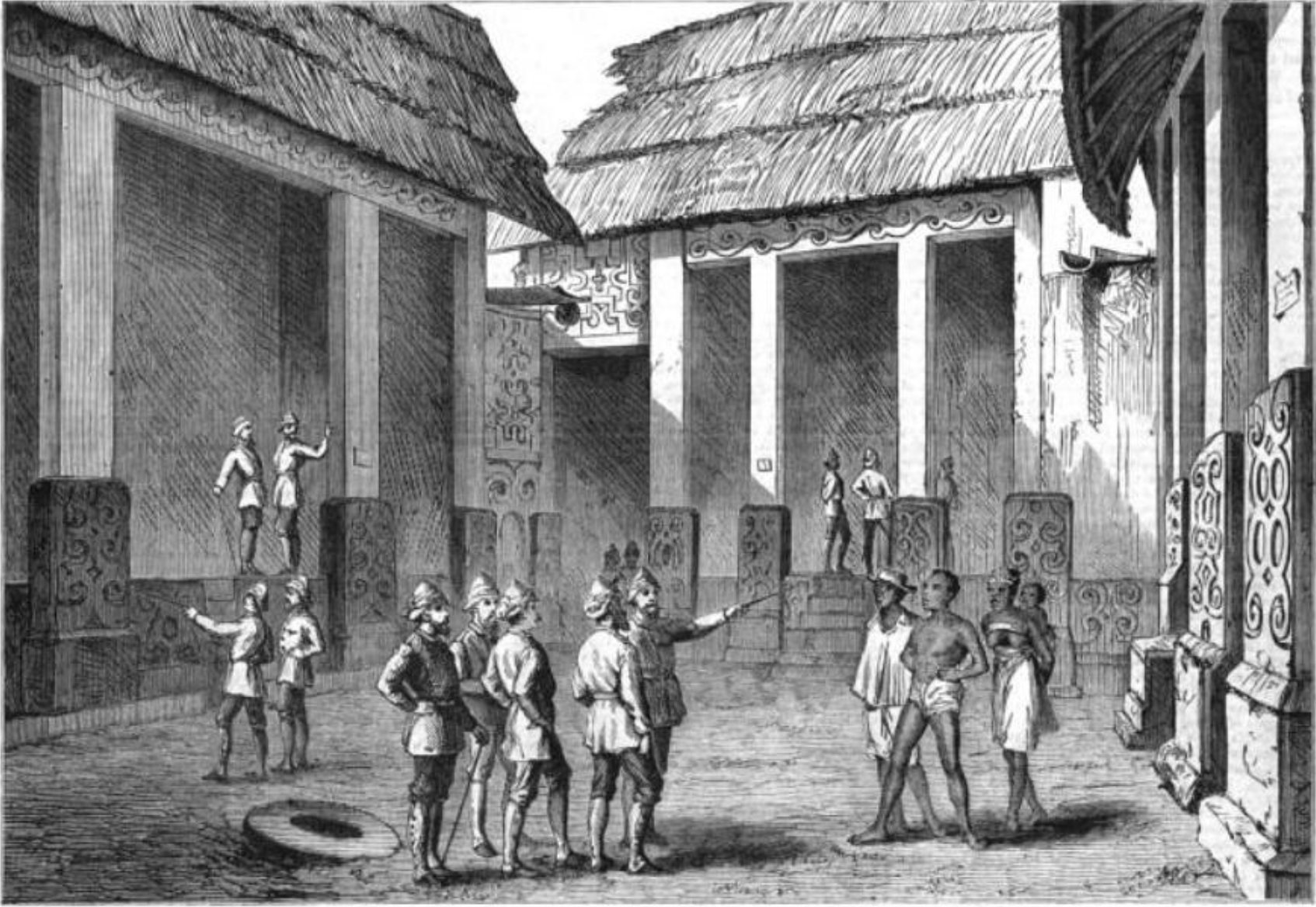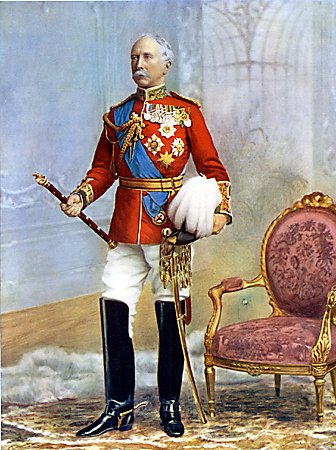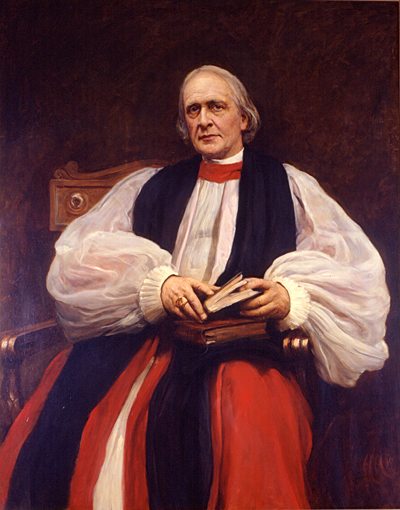|
Arthur Henry Paget
General Sir Arthur Henry Fitzroy Paget, (1 March 1851 – 8 December 1928) was a soldier who reached the rank of General and served as Commander-in-Chief, Ireland, where he was partly responsible for the Curragh Incident. Early life Paget was the son of Lord Alfred Paget; his paternal grandfather was Henry William Paget, 1st Marquess of Anglesey. His mother Cecilia (d. 1914) was the second daughter and co-heiress of George Thomas Wyndham of Cromer Hall in Norfolk. Paget was born in Berkeley Square, London, on 1 March 1851, the eldest son of six sons and six daughters. Among his siblings were Gerald Cecil Stewart Paget (grandfather of Percy Bernard, 5th Earl of Bandon), Sydney Augustus Paget, Almeric Hugh Paget, 1st Baron Queenborough, and Alexandra Harriet Paget (wife of Edward Colebrooke, 1st Baron Colebrooke). Paget was educated at Wellington College, and was a page of honour to Queen Victoria, entitling him to a free Guards commission ( purchase of commissions ... [...More Info...] [...Related Items...] OR: [Wikipedia] [Google] [Baidu] |
General (United Kingdom)
General (or full general to distinguish it from the lower general officer ranks) is the highest rank achievable by serving officers of the British Army. The rank can also be held by Royal Marines officers in tri-service posts, for example, General Sir Gordon Messenger the former Vice-Chief of the Defence Staff (United Kingdom), Vice-Chief of the Defence Staff. It ranks above Lieutenant-general (United Kingdom), lieutenant-general and, in the Army, is subordinate to the rank of Field marshal (United Kingdom), field marshal, which is now only awarded as an honorary rank. The rank of general has a NATO-code of OF-9, and is a four-star rank. It is equivalent to a Admiral (Royal Navy), full admiral in the Royal Navy or an air chief marshal in the Royal Air Force. Officers holding the ranks of lieutenant-general and Major-general (United Kingdom), major-general may be generically considered to be generals. Insignia A general's insignia is a crossed sword and baton. This appeared o ... [...More Info...] [...Related Items...] OR: [Wikipedia] [Google] [Baidu] |
Berkeley Square
Berkeley Square is a garden square in the West End of London. It is one of the best known of the many squares in London, located in Mayfair in the City of Westminster. It was laid out in the mid 18th century by the architect William Kent, and originally extended further south. The gardens' very large London Plane trees are among the oldest in central London, planted in 1789. Description Buildings Like most squares in British cities, it is surrounded largely by terraced houses, in this case grand townhouses. Originally these were the London residences of very wealthy families who would spend most of the year at their country house. Only one building, number 48, remains wholly residential. Most have been converted into offices for businesses typical of Mayfair, such as bluechips' meeting spaces, hedge funds, niche headhunters and wealth management businesses. The buildings' architects included Robert Adam but 9 Fitzmaurice Place (since 1935 home of the Lansdowne Cl ... [...More Info...] [...Related Items...] OR: [Wikipedia] [Google] [Baidu] |
Steeplechase (horse Racing)
A steeplechase is a distance horse race in which competitors are required to jump diverse fence and ditch obstacles. Steeplechasing is primarily conducted in Ireland (where it originated), the United Kingdom, Canada, United States, Australia, and France. The name is derived from early races in which orientation of the course was by reference to a church steeple, jumping fences and ditches and generally traversing the many intervening obstacles in the countryside. Modern usage of the term "steeplechase" differs between countries. In Ireland and the United Kingdom, it refers only to races run over large, fixed obstacles, in contrast to "hurdle" races where the obstacles are much smaller. The collective term "jump racing" or "National Hunt racing" is used when referring to steeplechases and hurdle races collectively (although, properly speaking, National Hunt racing also includes some flat races). Elsewhere in the world, "steeplechase" is used to refer to any race that involves j ... [...More Info...] [...Related Items...] OR: [Wikipedia] [Google] [Baidu] |
William Butler (British Army Officer)
Lieutenant General Sir William Francis Butler (31 October 18387 June 1910) was an Irish 19th-century British Army officer, writer, and adventurer. Military career He was born at Ballyslatteen, Golden, County Tipperary, Ireland, the son of Richard and Ellen Butler. The great famine of 1847 and scenes of suffering and eviction were amongst his earliest recollections. He was educated chiefly by the Jesuits at Tullabeg College. He entered the army as an ensign of the 69th Foot at Fermoy Barracks in 1858, becoming captain in 1872 and major in 1874. He took part with distinction in the Red River expedition (1870–71) and the Ashanti operations of 1873–74 under Wolseley and received the Companion of the Order of the Bath in 1874. He married on 11 June 1877 Elizabeth Thompson, an accomplished painter of battle scenes, notably ''The Roll Call'' (1874), ''Quatre Bras'' (1875), ''Rorke's Drift'' (1881), ''The Camel Corps'' (1891), and ''The Dawn of Waterloo'' (1895). They had s ... [...More Info...] [...Related Items...] OR: [Wikipedia] [Google] [Baidu] |
West Africa
West Africa or Western Africa is the westernmost region of Africa. The United Nations defines Western Africa as the 16 countries of Benin, Burkina Faso, Cape Verde, The Gambia, Ghana, Guinea, Guinea-Bissau, Ivory Coast, Liberia, Mali, Mauritania, Niger, Nigeria, Senegal, Sierra Leone, and Togo, as well as Saint Helena, Ascension and Tristan da Cunha ( United Kingdom Overseas Territory).Paul R. Masson, Catherine Anne Pattillo, "Monetary union in West Africa (ECOWAS): is it desirable and how could it be achieved?" (Introduction). International Monetary Fund, 2001. The population of West Africa is estimated at about million people as of , and at 381,981,000 as of 2017, of which 189,672,000 are female and 192,309,000 male. The region is demographically and economically one of the fastest growing on the African continent. Early history in West Africa included a number of prominent regional powers that dominated different parts of both the coastal and internal trade networks, suc ... [...More Info...] [...Related Items...] OR: [Wikipedia] [Google] [Baidu] |
Anglo-Ashanti Wars
The Anglo-Ashanti wars were a series of five conflicts that took place between 1824 and 1900 between the Ashanti Empire—in the Akan interior of the Gold Coast—and the British Empire and its African allies. Though the Ashanti emerged victorious in some of these conflicts, the British ultimately prevailed in the fourth and fifth conflicts, resulting in the complete annexation of the Ashanti Empire by 1900. The wars were mainly due to Ashanti attempts to establish a stronghold over the coastal areas of present-day Ghana. Coastal peoples such as the Fante and the Ga came to rely on British protection against Ashanti incursions. Earlier wars The British fought three earlier wars in the Gold Coast: In the Ashanti-Fante War of 1806–07, the British refused to hand over two rebels pursued by the Ashanti, but eventually handed one over (the other escaped). In the Ga-Fante War of 1811, the Ashanti sought to aid their Ga allies in a war against the Fante and their British allie ... [...More Info...] [...Related Items...] OR: [Wikipedia] [Google] [Baidu] |
Garnet Wolseley, 1st Viscount Wolseley
Field Marshal Garnet Joseph Wolseley, 1st Viscount Wolseley, (4 June 183325 March 1913), was an Anglo-Irish officer in the British Army. He became one of the most influential and admired British generals after a series of successes in Canada, West Africa and Egypt, followed by a central role in modernizing the British Army in promoting efficiency. He served in Burma, the Crimean War, the Indian Mutiny, China, Canada and widely throughout Africa—including his Ashanti campaign (1873–1874) and the Nile Expedition against Mahdist Sudan in 1884–85. Wolseley served as Commander-in-Chief of the Forces from 1895 to 1900. His reputation for efficiency led to the late 19th century English phrase "everything's all Sir Garnet", meaning, "All is in order." Early life and education Lord Wolseley was born into a prominent Anglo-Irish family in Dublin, the eldest son of Major Garnet Joseph Wolseley of the King's Own Scottish Borderers ( 25th Foot) and Frances Anne Wolseley (''née'' Sm ... [...More Info...] [...Related Items...] OR: [Wikipedia] [Google] [Baidu] |
Scots Guards
The Scots Guards (SG) is one of the five Foot Guards regiments of the British Army. Its origins are as the personal bodyguard of King Charles I of England and Scotland. Its lineage can be traced back to 1642, although it was only placed on the English Establishment (thus becoming part of what is now the British Army) in 1686. History Formation; 17th century The regiment now known as the Scots Guards traces its origins to the Marquis of Argyll's Royal Regiment, a unit raised in 1642 by Archibald Campbell, 1st Marquess of Argyll in response to the 1641 Irish Rebellion. After the Restoration of Charles II, the Earl of Linlithgow received a commission dated 23 November 1660 to raise a regiment which was called The Scottish Regiment of Footguards. It served in the 1679 Covenanter rising of 1679, as well as Argyll's Rising in June 1685, after which it was expanded to two battalions. When the Nine Years War began in 1689, the first battalion was sent to Flanders; the second served ... [...More Info...] [...Related Items...] OR: [Wikipedia] [Google] [Baidu] |
Purchase Of Commissions In The British Army
The purchase of officer commissions in the British Army was the practice of paying money to the Army to be made an officer of a cavalry or infantry regiment of the English and later British Army. By payment, a commission as an officer could be secured, avoiding the need to wait to be promoted for merit or seniority. This practice was the usual way to obtain a commission in the Army from the 17th to the late 19th century. The practice began in 1683, during the reign of King Charles II, and continued until it was abolished on 1 November 1871, as part of the Cardwell Reforms. Formally, the purchase price of a commission was a cash bond for good behaviour, liable to be forfeited to the Army's cashiers (accountants) if found guilty of cowardice, desertion, or gross misconduct. Great Britain and Ireland Only commissions in cavalry and infantry regiments could be purchased and therefore only those up to the rank of colonel. Commissions in the Royal Engineers and the Royal Artillery wer ... [...More Info...] [...Related Items...] OR: [Wikipedia] [Google] [Baidu] |
Queen Victoria
Victoria (Alexandrina Victoria; 24 May 1819 – 22 January 1901) was Queen of the United Kingdom of Great Britain and Ireland from 20 June 1837 until Death and state funeral of Queen Victoria, her death in 1901. Her reign of 63 years and 216 days was longer than that of List of monarchs in Britain by length of reign, any previous British monarch and is known as the Victorian era. It was a period of industrial, political, scientific, and military change within the United Kingdom, and was marked by a great expansion of the British Empire. In 1876, the British Parliament voted to grant her the additional title of Empress of India. Victoria was the daughter of Prince Edward, Duke of Kent and Strathearn (the fourth son of King George III), and Princess Victoria of Saxe-Coburg-Saalfeld. After the deaths of her father and grandfather in 1820, she was Kensington System, raised under close supervision by her mother and her comptroller, John Conroy. She inherited the throne aged 18 af ... [...More Info...] [...Related Items...] OR: [Wikipedia] [Google] [Baidu] |
Wellington College, Berkshire
Wellington College is a public school (English independent day and boarding school) in the village of Crowthorne, Berkshire, England. Wellington is a registered charity and currently educates roughly 1,200 pupils, between the ages of 13 and 18, per annum. The college was built as a national monument to the first Duke of Wellington (1769–1852), in whose honour it is named. Queen Victoria laid the foundation stone in 1856 and inaugurated the School's public opening on 29 January 1859. Many former Wellington pupils fought in the trenches during the First World War, a conflict in which 707 of them lost their lives, many volunteering for military service immediately after leaving school. A further 501 former pupils were killed in action in the Second World War. The school is a member of the Rugby Group of 18 British public schools and is also a member of the G20 Schools group. History Wellington College was granted a royal charter in 1853 as "''The Royal and Religious Foun ... [...More Info...] [...Related Items...] OR: [Wikipedia] [Google] [Baidu] |
Edward Colebrooke, 1st Baron Colebrooke
Edward Arthur Colebrooke, 1st Baron Colebrooke, (12 October 1861 – 28 February 1939), known as Sir Edward Colebrooke, Bt, from 1890 to 1906, was a British Liberal politician and courtier. He served as Captain of the Honourable Corps of Gentlemen-at-Arms under H. H. Asquith and David Lloyd George between 1911 and 1922. Background Colebrooke was the son of Sir Thomas Colebrooke, 4th Baronet, and his wife Elizabeth Margaret Richardson, daughter of J. Richardson. He succeeded his father in the baronetcy in 1890. Political career In 1906 Colebrooke was raised to the peerage as Baron Colebrooke, of Stebunheath in the County of Middlesex. He served under Sir Henry Campbell-Bannerman and H. H. Asquith as a Lord-in-waiting (government whip in the House of Lords) from 1906 to 1911 and then under Asquith and later David Lloyd George as Government Chief Whip in the Lords and Captain of the Honourable Corps of Gentlemen-at-Arms from 1911 to 1922. In 1914 he was admitted to the Privy Counc ... [...More Info...] [...Related Items...] OR: [Wikipedia] [Google] [Baidu] |







